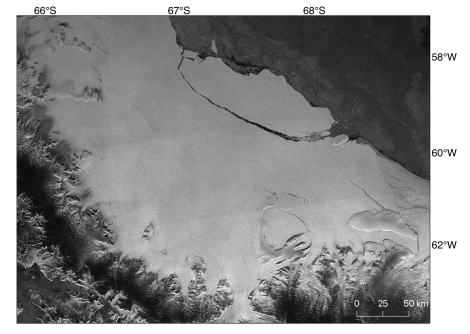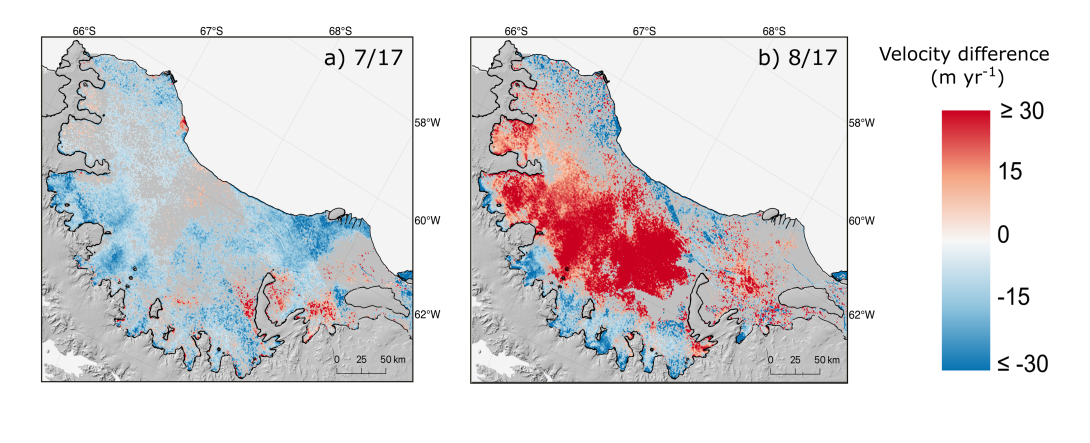
Research documenting the effects of a breakaway Antarctic iceberg by a St Catharine’s alumna while she was an undergraduate at the College has been published in an international journal, with the support of a Geography Fellow.
For her final-year project, Katherine Deakin (2018, Geography) analysed sequences of satellite images from 2014 to 2020 to investigate the impacts of a colossal (~ 6 000 km2) iceberg that broke off the floating Larsen C Ice Shelf, Antarctic Peninsula, in July 2017. The process of a new iceberg breaking off an ice shelf is known as ‘calving’.
Katherine then used the images to calculate monthly velocities across the entire remaining ~47 000 km2 ice shelf and found that the iceberg calving created a previously undocumented six-month-long oscillatory velocity response, which was superimposed on a longer-term ice shelf slowdown.
She initially reported her research in her undergraduate dissertation, which earned her a distinction from the University of Cambridge. She was also awarded three College prizes: the William Balchin Prize in Geography, the Gus Caesar Prize in Geography and the Stephen Hinchliffe Dissertation Prize in Geography.
Her work has now gone on to form the basis of a paper in the Journal of Glaciology, which she has published with Professor Ian Willis (1989), Professor of Glaciology at the University of Cambridge and Director of Studies in Geography at St Catharine’s.
Katherine returned to St Catharine’s after graduation for an MPhil in Polar Studies at the Scott Polar Research Institute (SPRI) where, in addition to her Master’s work, she found time to turn her undergraduate dissertation into this new paper.
Katherine said, "It was quite a lot of extra work because new monthly velocity data across Antarctica had just been released by scientists working on behalf of the European Space Agency. I incorporated this new dataset into my research and produced new maps and diagrams of the ice shelf’s behaviour up to the end of 2020."
Professor Willis, who is also based at SPRI, added, “The findings are significant because the alternating periods of speed up and slow down, the oscillations, may have weakened the remaining ice shelf, making it more susceptible to iceberg calving or even large scale break up in the future.
“Several ice shelves on the Antarctic Peninsula have shrunk or collapsed over recent decades, allowing glaciers and ice streams on the land to flow more quickly to the ocean, raising global sea levels. We need to keep our eye on the remaining ice shelves, such as Larsen C.”
The work documented in the new paper was carried out in collaboration with colleagues from SPRI: Karla Boxall (PhD student) and Dr Frazer Christie (Postdoctoral Research Associate).
Reference
Katherine A. Deakin, Frazer D. W. Christie, Karla Boxall and Ian C. Willis. Oscillatory response of Larsen C Ice Shelf flow to the calving of iceberg A-68. Journal of Glaciology, 2023.








